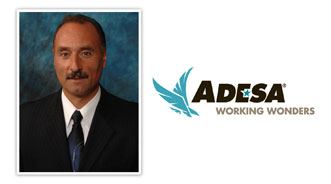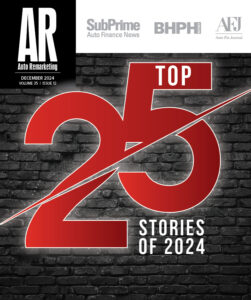Kontos Discusses 2011 Wholesale Highlights, Spring Market Projection

It might be the dead of winter in many parts of the country, but ADESA’s Tom Kontos peered ahead as to what dealers might be encountering in the auction lanes when spring arrives.
In discussing how 2011 unfolded and what might be ahead this year, Kontos believes used-vehicle prices continue to run into an artificial price ceiling created by the price of a new model.
“Prices of used cars have climbed to levels where they begin to compete with new-car prices and are less attractive relative to new-car prices, which chokes off a portion of used-car demand and converts into people who buy new cars,” Kontos explained to Auto Remarketing.
“Not everybody can do that, but the people who have financial resources and credit means to buy a new car, used-car prices have climbed to a point where for many folks a new-car represents a better bargain,” he continued.
So what does that trend mean for the spring auction market?
“I don’t think price will climb significantly above year-ago levels and may in fact be slightly down from year-ago levels,” Kontos responded.
To finish 2011, ADESA Analytical Services discovered through its monthly analysis that wholesale prices in December averaged $9,878. That figure was up 0.1 percent compared to November and up 0.5 percent versus December 2010.
Kontos pointed out price drops tended to be concentrated in the truck segments, although compact cars also took a bit of a hit during the month.
ADESA also determined manufacturers registered a 2.5-percent month-over-month price increase and a 4.4-percent year-over-year rise in December.
Meanwhile, fleet/lease consignors experienced a 1.9-percent sequential price decrease and a 1.5-percent annual increase.
Furthermore, the auction company said dealer consignors enjoyed a 1.3-percent average price increase versus November and a 3.4-percent uptick versus December 2010.
“Wholesale prices were ‘steady as she goes’ in December after mild seasonal softening in November,” Kontos highlighted.
“Retail new and used vehicle demand in December closed the year on a positive note and provided support for wholesale prices, especially in light of continued tight used vehicle supply,” he continued.
In elaborating more about 2011 with Auto Remarketing, Kontos indicated how much last year played out similarly to 2010.
“Last year was sort of a continuation of the prior year where we continue as a remarketing industry to deal with tight supply of used cars in the aftermath of the recession from 2008 and 2009,” Kontos acknowledged.
“It’s going to take a while for the supply of used cars to recover to the point where they were in the years prior to the recession, even though we’re moving in a positive direction of more used cars,” he projected, adding that a boost of off-lease and repo units in 2013 might enhance overall wholesale volume.
Kontos hesitated to call 2011 the “nadir” of wholesale volume since this year could see similar levels. However, he returned to the topic of prices and estimated that what dealers could be putting up in the lanes might remain at current levels.
“If you had to boil down my take on 2011, it was very much like 2010, a year where tight supply and strong used-car demand combined to keep wholesale prices at historically high levels,” Kontos said.
“In 2011, we might have been at the low point, but this year might be very comparable,” he continued. “We’re in some of the tightest periods of used-car supply. That’s what’s causing prices to be as strong as they’ve been for well over a year now."
Should dealers concede and call current prices and volumes at auction the new normal? Kontos doesn’t think so.
“I think all businesses tend to have a cyclical dimension to them. For me to characterize this point in the cycle as a new normal it would be ignoring the fact that things tend to run in cycles,” Kontos replied.
One other caveat Kontos made regarding 2011 and how it could portend toward to future had to do with the earthquake and tsunami in Japan last March, an event the ADESA economist stressed was a “tragic set of circumstances.”
Kontos believes the tsunami “created a little more headroom for that price ceiling. The tsunami allowed that ceiling to temporarily be raised and created a little more headroom for used-car prices to climb again, the last breath of additional upward movement because there were so few of the Japanese cars available in inventory for a period of time.
“With inventories of new-cars being as tight as they were, that caused dealers to bid more aggressively for used vehicles at auction,” he added.
As 2012 continues to ramp up, Kontos mentioned two other factors he’s looking to watch as this year unfolds.
“It’s always important to keep up with what’s going on with fuel prices. There might be some events to create some uncertainty in fuel markets that could cause prices to go up again,” Kontos said referring ongoing instability in the Middle East.
And Kontos pointed out that a presidential election also is ahead.
“There’s going to be some mood swings among consumers, investors and businesses that may affect the markets, even the used-car market, positively or negatively throughout the year based on those mood swings created oftentimes by the media onslaught that’s going to be happening as the result the campaigns,” he noted.
“It can go either way, positively or negatively,” Kontos concluded.

 View The Latest Edition
View The Latest Edition

